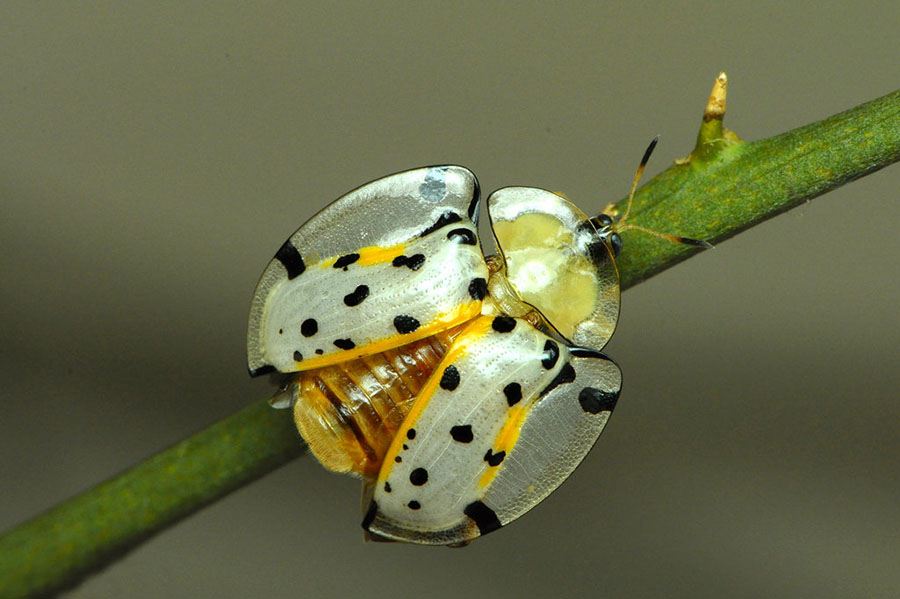Scientists created thinner, harder and more flexible catheters to be introduced into the people’s organs when performing surgery. According to the study published Wednesday in the journal Science Advance, they based these medical devices inspired on the penises of the beetles.
Experts have long struggled thinking a way to inject liquid into parts of the body that are usually hard to reach. By creating more flexible and thinner, but also stronger catheters, doctors can introduce them without breaking them, to then insert fluids without any problem.
The tortoise beetle penis’ have many characteristics that the scientists believed were extremely helpful. Like many insects, this one possesses a penis that’s longer than its body.
Commonly, this bug can measure around 10 millimeters. But its member, while erected, can be two to three millimeters more than that. Additionally, it’s so flexible that the bug can contort it until finding its way to the female beetle’s vagina.
In other words, the beetle shapes its organ so it can look like a hook.

Yoko Matsumura, the co-author of the new study and student of biomechanics at Kiel University in Germany, said that “the tip (of the beetle’s penis) is curved a little bit.” She also said that she wanted to know how the bug’s members navigate the female coils.
The study consisted in applying a low force into the penis. Thus, to see how flexible, hard or soft this was when it’s fully erect.
Flexible enough not to break it
Matsumura explained that the bug’s penis, although it’s “quite long,” would still be considered by every person as “very small.” She and two other colleagues used microscopes “so precise” that they required the bug to be “completely still.” Thus, forcing them to kill the beetle and use its “fresh penis.”
Pointing the decision of the team to kill the bug, Matsumura said that – “unfortunately for them” – it was “bad news for the beetles in the experiment.”
Although the bug’s penis looks “very simple,” Matsumura said that “it is actually complicated.”

Not every beetle’s penis is equal when talking about stiffness. These characteristics vary depending on its length – which affects both the base and the tip of the organ.
The experts believed that same stiffness could influence in the way the beetle adapts the shape of its penis, without hurting itself, to quickly introduce it to his female partner.
The scientists said that they hope their findings can help them to imagine new catheter designs to solve many problems – like the one mentioned in a study published early this year, which related the complications of the anesthesia use and the “inaccurate catheter tip location.”
Also, another study showed how difficult it was for doctors to use catheters in heart surgeries on children. The majority of the complications are generated due to “line malfunctions.”
Source: Science Advances
